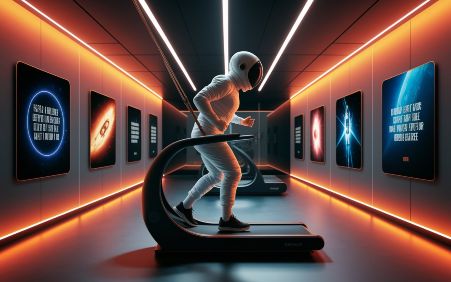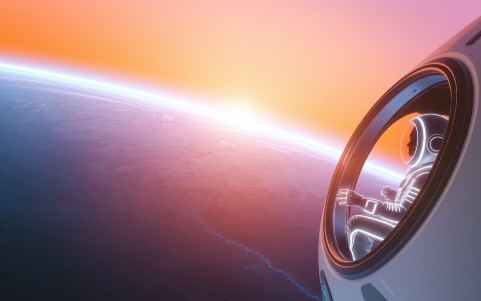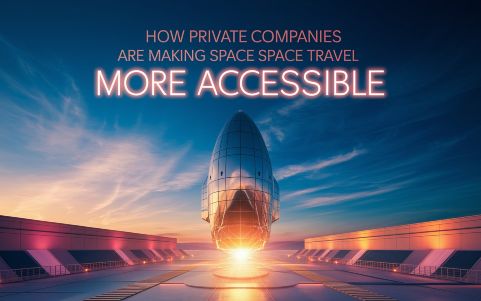Space travel once belonged only to astronauts. But that changed with bold individuals who wanted more than just dreams. They wanted space. The untold story of the first space tourists reveals courage and ambition. It also shows the early days of commercial spaceflight.
The Beginning of Space Tourism
Space tourism began with one dream. That dream became real in the early 2000s. Wealthy pioneers wanted to see Earth from above. This desire created a new industry. The untold story of the first space tourists started with risk and vision.
Dennis Tito was the first private space traveler. He paid millions to fly to the International Space Station. He trained for months and faced doubts. Yet he continued. His journey marked the start of private space travel.
Dennis Tito’s Historic Journey
Dennis Tito was an American engineer. He believed that anyone could go to space. He made that dream real. In 2001 he joined a Russian Soyuz mission. He reached the International Space Station. That trip changed everything.
Many people questioned his decision. NASA had doubts. Russia agreed to launch him. This made history. The untold story of the first space tourists begins with him. He inspired others to believe in private spaceflight.
Preparation and Challenges
Space travel needs preparation. Tourists trained like astronauts. They studied science and learned safety. Physical fitness was also needed. They did this for weeks before launch.
Dennis Tito trained in Star City. He joined Russian astronauts. He learned how to live in space. The untold story of the first space tourists shows their hard work. They earned their place among real space travelers.
Other Early Space Tourists
After Tito others followed. Mark Shuttleworth flew next. He was from South Africa. He visited space in 2002. His trip showed that space tourism was growing. He wanted to bring science to young minds.
Gregory Olsen flew in 2005. He studied experiments during his flight. He helped prove tourists could assist with research. The untold story of the first space tourists shows they had goals beyond adventure.
Anousheh Ansari followed in 2006. She became the first female private space traveler. She funded space prizes and believed in future exploration. She inspired many people worldwide.
Space Adventures Company
The first space tourists did not fly alone. A company named Space Adventures helped them. They arranged trips with Russia. They handled training and mission support.
Space Adventures began in 1998. Their goal was bold. They wanted people to visit space. The untold story of the first space tourists would not exist without them. They helped turn ideas into real journeys.
The Cost of a Space Ticket
A ticket to space was expensive. It cost between 20 and 35 million dollars. Only a few people could afford this. Still they went ahead.
These tourists believed space was worth the cost. They wanted to see Earth from above. They wanted to feel zero gravity. The untold story of the first space tourists proves how far people go for dreams.
Life in Orbit for Tourists
Life in space was not easy. Tourists lived like astronauts. They ate space food. They used special toilets. They floated in zero gravity. They followed daily routines.
They also joined experiments. Some even helped with photography. Others filmed their journeys. The untold story of the first space tourists shows they added value in space.
Risks Faced by Tourists
Space travel is not safe. There are many dangers. Tourists knew this. They faced the risk. Rockets can fail. Life support can break. Space can harm the body.
Yet they accepted these risks. They wanted to make history. The untold story of the first space tourists shows they had courage. They trusted their training and crews.
Media and Public Reaction
The world watched with excitement. Many praised the courage of these tourists. Others saw them as rich thrill seekers. The media loved their stories.
News outlets shared every detail. They became famous worldwide. The untold story of the first space tourists became part of pop culture. Space travel began to feel closer to everyone.
Impact on Future Space Tourism
These early tourists opened doors. They showed space was not just for astronauts. They proved that civilians could join space missions. This changed public views.
Their journeys inspired new space companies. It made way for future plans. The untold story of the first space tourists helped shape today’s space market. It was the start of commercial space travel.
New Players in the Game
After the first flights new companies joined. SpaceX and Blue Origin began to plan flights. Virgin Galactic started work on suborbital rides. Tourism had real momentum.
Private firms aimed to lower costs. They also wanted to expand access. The untold story of the first space tourists made this shift possible. They were true pioneers.
Evolving Space Goals
Space is no longer only for research. It now includes tourism. It may soon include hotels and entertainment. The early space tourists helped this happen.
People now dream of moon hotels and Mars trips. Space travel is changing. The untold story of the first space tourists remains the root of this vision.
Pros and Cons of Early Space Tourism
| Pros | Cons |
|---|---|
| Opened space to private citizens | Extremely high cost |
| Inspired space tech innovation | Risk of accidents or injuries |
| Created public interest in space | Space debris concerns |
| Helped fund space programs | Limited access for common people |
| Promoted STEM education | Raised ethical and legal questions |
The Cultural Impact of Space Tourists
These first space tourists influenced art and media. Their flights appeared in documentaries. They inspired books and films. The public became more curious about space.
Young people dreamed of flying. They studied science. Teachers used space stories in class. The untold story of the first space tourists had wide impact.
Education and Science Outreach
Some tourists supported education. They funded projects. They spoke at schools. They shared their stories. They helped students imagine life beyond Earth.
Anousheh Ansari supported STEM programs. Mark Shuttleworth brought science to schools. The untold story of the first space tourists includes their outreach work. They gave back to the next generation.
Scientific Contributions
Space tourists also did science. They helped with experiments. They tested new tools. Some monitored health changes. Others recorded life in zero gravity.
This work added real value. It helped space agencies learn more. The untold story of the first space tourists shows they did more than travel. They helped space research grow.
Ethics and Debates Around Space Tourism
Some people questioned space tourism. They worried about waste. Others saw it as a rich man’s game. Critics asked if the money could help Earth instead.
Some believed space should stay public. They worried about private control. The untold story of the first space tourists raised many hard questions. Debate still continues today.
Environmental Concerns
Rockets release emissions. They may harm the atmosphere. Launch sites change land use. Noise affects wildlife. These are real problems.
Space tourism could make this worse. Critics ask for green solutions. The untold story of the first space tourists includes this debate. Sustainability matters in future missions.
Legal and Policy Issues
Space law is complex. Who owns space? Who protects tourists? Who fixes damage? These issues now matter more.
Early tourists followed strict rules. New laws now emerge. The untold story of the first space tourists shows how policy had to grow. Laws must keep up with change.
What Comes Next for Space Tourists
The future looks bright. SpaceX now flies civilians. Blue Origin offers quick rides. Virgin Galactic prepares for frequent launches. Tourism is now real.
Costs may drop. More people may fly. The untold story of the first space tourists helped build this future. Their efforts opened the skies.
The Role of Technology
New tech makes space travel safer. Rockets now reuse parts. Training now uses VR. Health monitoring has improved.
This makes tourism more efficient. The untold story of the first space tourists relied on older tech. Today we see progress from their brave steps.
Vision for the Future
Soon people may visit the moon. Some want Mars. Others imagine orbiting hotels. These ideas once seemed impossible. Now they seem near.
The untold story of the first space tourists leads to this dream. They were the start of a new space age.
Frequently Asked Questions
Who was the first space tourist?
Dennis Tito was the first space tourist. He flew to the ISS in 2001. He funded his own mission.
How much did space tourism cost?
Early tickets cost 20 to 35 million dollars. Prices may fall as companies improve tech.
How did space tourists train?
They trained like astronauts. They studied science. They did fitness drills. They prepared in Russia’s Star City.
What risks did they face?
They faced launch risks. They dealt with zero gravity. They had to pass strict medical tests.
Will space tourism grow?
Yes space tourism continues to grow. Companies plan more flights. Lower costs may allow more people to fly.
Final Thoughts
The untold story of the first space tourists is a tale of courage and dreams. These pioneers did what many feared. They opened space to all. They helped spark a new era.
Their journeys changed science. They changed business. They inspired the world. Their story will live on in every new mission. The future of space travel starts with them.





